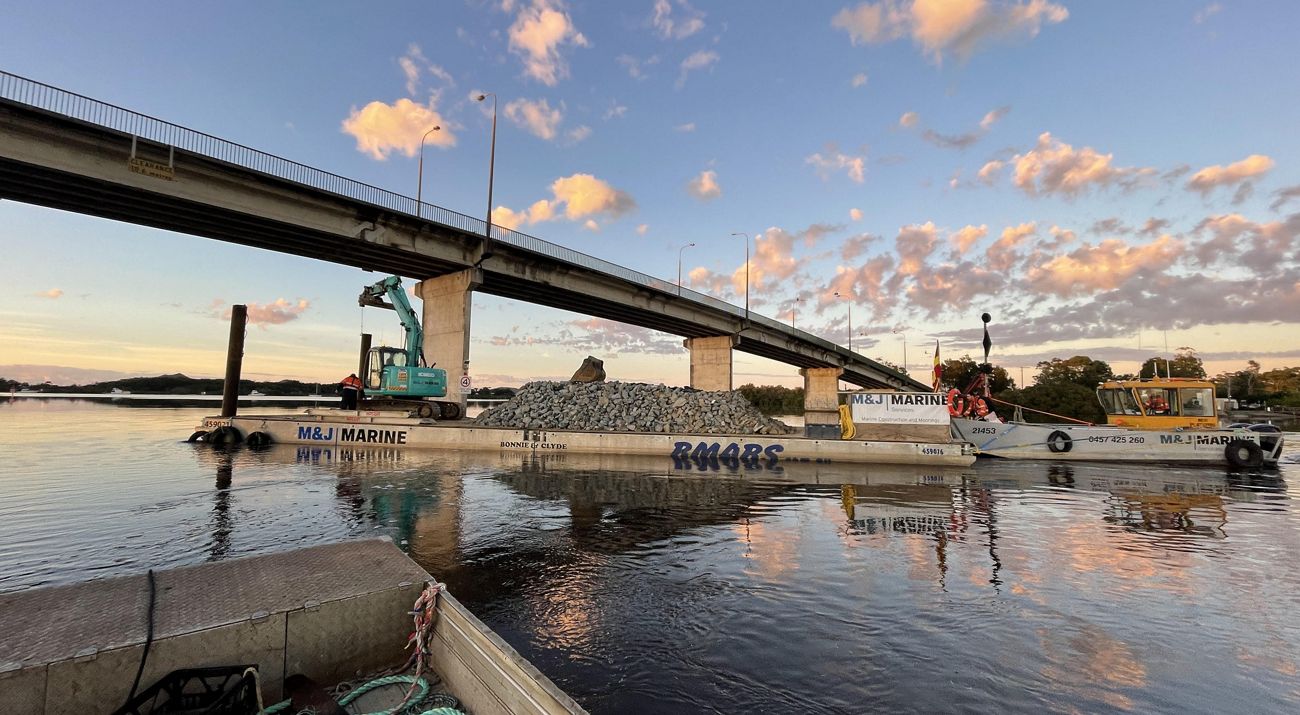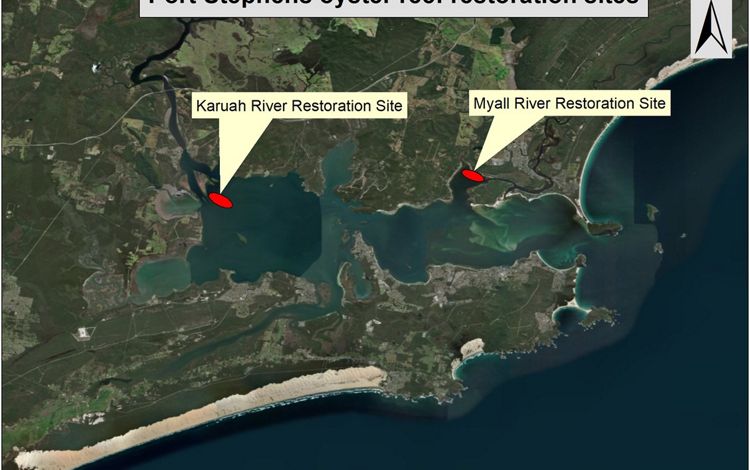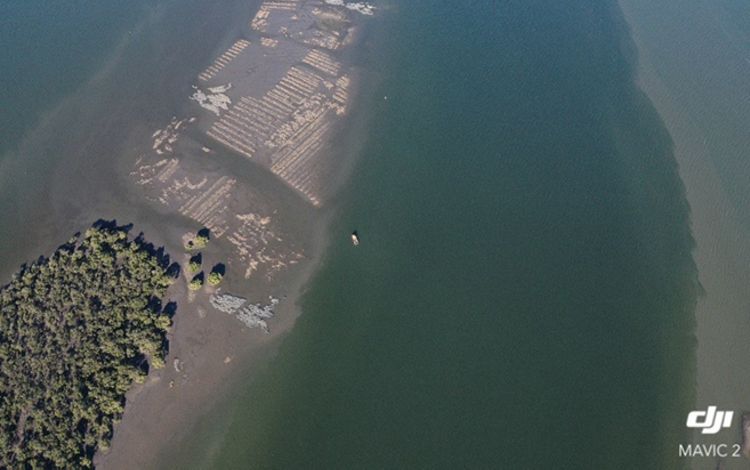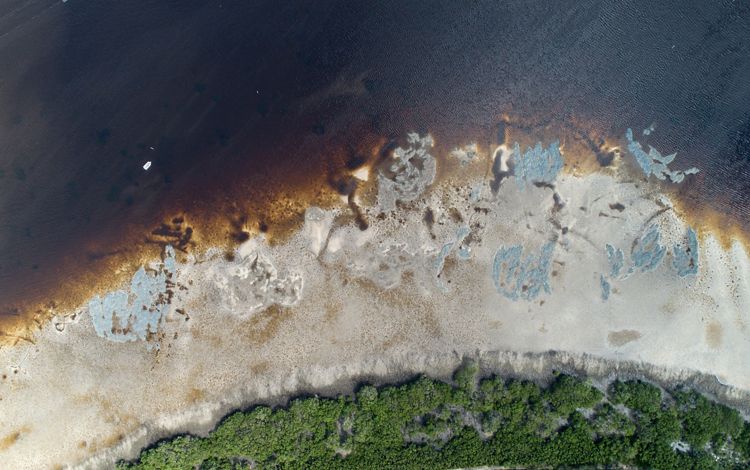
Reef Builder: Restoring Australia's lost shellfish reefs
Port Stephens intertidal shellfish reef restoration
A Reef Builder project
The Port Stephens-Great Lakes Marine Park is home to a diverse range of landscapes including stunning beaches, mangrove forests, and seagrass beds, which support a range of ecosystems and wildlife.
The history of Port Stephens and the shellfish reefs
Like much of Australia, the area was once the home of extensive shellfish reefs. Sadly, overexploitation, pollution, introduced pests and oyster disease destroyed almost all of them.
The Port Stephens Shellfish Reef Restoration Project
In Port Stephens, remnant reefs showed potential for new life. The Nature Conservancy (TNC) Australia worked with the NSW Department of Primary Industries (NSW DPI), Fisheries to gain support for shellfish reef restoration in NSW, with the NSW Government funding the first large scale pilot of intertidal shellfish reef restoration as part of its Marine Estate Management Strategy program in Port Stephens.
A vision to scale-up the Port Stephens shellfish reef restoration
In 2021, building on the success of the pilot project in Port Stephens, we joined forces with NSW DPI Fisheries and the Australian Government to expand the large-scale shellfish reef restoration project in NSW.
Port Stephens was one of thirteen sites identified for reef restoration under Reef Builder, an initiative supported by the Australian Government and by key local stakeholders Woromi Local Aboriginal Land Council, Crown Lands, Port Stephens Council, Myall River Action Club, local oyster growers, local fishers and the general community.
VIEW THE GALLERY



Under the Reef Builder project, the Karuah and Myall reefs were restored across an area of 3.1 hectares. Combine this with the previous restoration effort and a total of 6.4 hectares have been restored.
7,500 tonnes of rock and 180m3 of recycle Port Stephens oyster shell was used to create the reef bases. Over 55 million million Sydney Rock Oysters colonised the restored reef bases in the first years.
It doesn't stop here
Whilst monitoring frequency naturally changes as the restored reef bases become settled, the reefs are still monitored for changes.
For more information on the achievements of the Reef Builder initiative, read the 2024 Reef Builder Final Summary Report.
Read more:
View the Gallery


